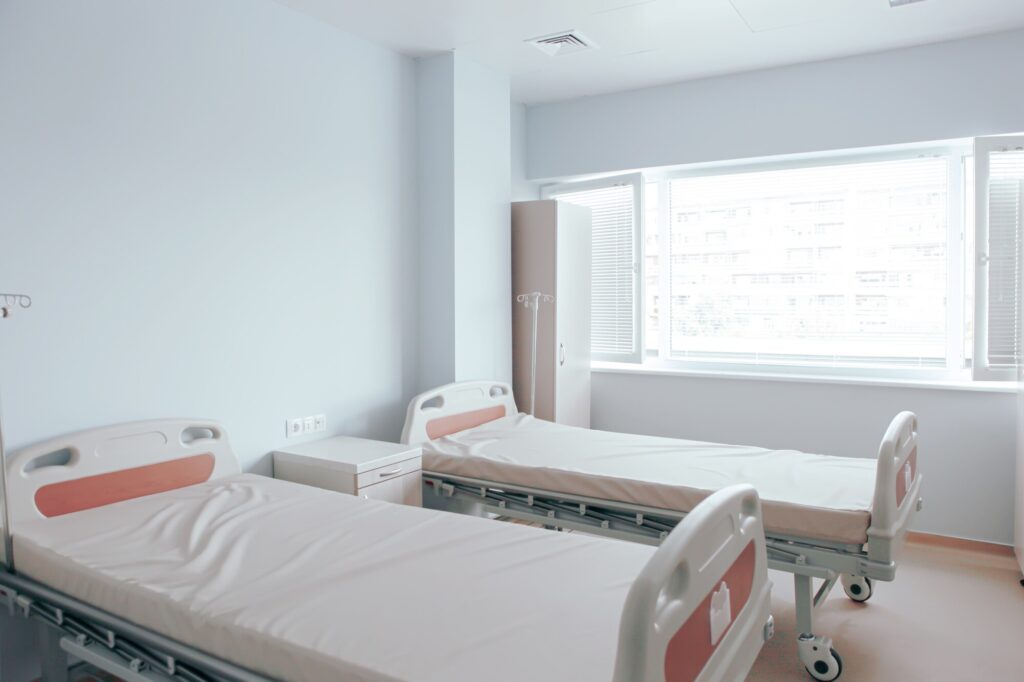Everyone needs a mattress, but not everyone and every place requires the same type of mattress.
If you compare a regular mattress found at residential properties to those in hospitals, shelters, etc., you’ll notice a stark difference between the two.
While an ordinary mattress is designed for comfort alone, a health care mattress is designed to last longer, prevent infections, accommodate people of diverse populations, and meet strict safety regulations.
Health care mattresses are engineered to meet the demanding needs of institutional environments where durability, safety, and performance are non-negotiable.
So, if you’re a facility manager or tasked to procure the best bedding for a camp, firehouse, nonprofit, or any institutional setting, then you must read the full blog.
It gives you detailed insights into the top features of health care mattresses, so you know why they’re different and what you should look for while buying them for any facility.
So, let’s explore their unique highlights, which are discussed below.
-
Infection Control and Antimicrobial Protection
Shelters, hospitals, care facilities, camps, or other places accommodating diverse populations are more prone to cross-contamination.
Hence, they demand a mattress with advanced infection control properties to limit or contain any infections.
A healthcare mattress integrates antimicrobial protection to actively inhibit bacterial, viral, and fungal growth throughout the mattress structure.
Another notable highlight of healthcare mattresses is their fluid-resistant barriers.
These barriers prevent penetration of bodily fluids or cleaning solutions into the core of the mattress, maintaining its hygienic integrity even under heavy usage conditions.
Their strong construction eliminates crevices where pathogens typically accumulate, while their non-porous surface facilitates thorough disinfection between uses.
For facilities serving diverse populations, these features reduce the facility’s liability, support regulatory compliance, and minimize operational disruptions caused by contamination accidents.
The antimicrobial protection maintains effectiveness throughout the mattress’s lifespan, providing consistent infection prevention that standard mattresses cannot deliver in such environments.
-
Enhanced Durability and Commercial-Grade Construction
Institutional environments demand mattresses built to withstand intensive use. Unlike regular mattresses, a health care mattress features reinforced internal structures designed for continuous operation, frequent repositioning, and the weight demands of medical equipment or multiple occupants.
Their high-density core materials maintain structural integrity and support features throughout the extended service life.
It often prevents premature sagging that creates operational disruptions, making it unfit for use.
Most health care mattresses also feature commercial-grade covers that resist regular wear and tear from daily usage while maintaining protective barrier properties.
They also possess reinforced edges that prevent breakdown at stress points where standard mattresses typically fail.
If you’re a procurement officer managing a facility’s budget, this enhanced durability of a health care mattress will translate to predictable replacement cycles, reduced emergency purchases, and better cost control.
-
Regulatory Compliance and Safety Standards
All health care mattresses are designed to meet strict regulatory requirements that regular mattresses cannot satisfy.
If you’re looking to buy the perfect mattress, you should check its regulatory and compliance standards regarding fire safety, chemical emissions, material safety, etc., which are mandated for institutional use.
A high-quality health care mattress is generally made with fire-resistant materials, and its construction methods comply with the healthcare facility’s fire codes, supporting mass evacuations during emergencies.
They’re also made with low-emission materials that prevent harmful off-gassing that could affect occupants with sensitivities.
If you’re responsible for procuring quality bedding for a camp, senior care facility, hospital, etc., ensure you choose health care mattresses with the necessary certifications.
It will ensure effortless compliance with federal regulations governing institutional facilities, saving you during inspection processes.
-
Easy Maintenance and Operational Efficiency
One of the most standout features of a health care mattress is its ease of maintenance.
Its structural design, surface, edges, etc., everything is designed to reduce the maintenance burden and improve housekeeping efficiency.
Many health care mattresses come in one-piece construction that eliminates removable components that can be lost, damaged, or create cleaning challenges.
The mattress’s smooth and non-porous surface allows for smooth cleaning and disinfection, supporting quick room turnover on busy days.
Institutional settings with a higher accommodation count should invest in lightweight designs to lower physical strain on staff during routine maintenance, bed changes, and facility cleaning processes.
If you prioritize labor cost and efficiency metrics, you will appreciate the health care mattress’s quick-drying properties as they minimize downtime between uses, supporting operational efficiency in high-occupancy facilities.
The operational efficiency through improved staff productivity, lower labor costs, and reduced cleaning time compounds over time, providing ongoing value that justifies the initial investment.
Conclusion
Finding the right mattress is essential for places that accommodate numerous people.
If you’re working for a senior care facility, camp, hostel, firehouse, hospital, shelter, etc., you must invest in a health care mattress that provides comfort to the residents while maintaining durability.
Purchases like these are strategic investments rather than simple bedding purchases.
The unique features discussed above address the complex challenges that most institutional settings face.
Procurement managers or facility managers should evaluate multiple health care mattress options and prioritize suppliers with proven institutional experience.
You should also consider the relevant compliance documentation and check which supplier provides ongoing support facilities. If you’re overwhelmed with the choices, involve the facility’s operational staff in the selection process to ensure the right selection.

